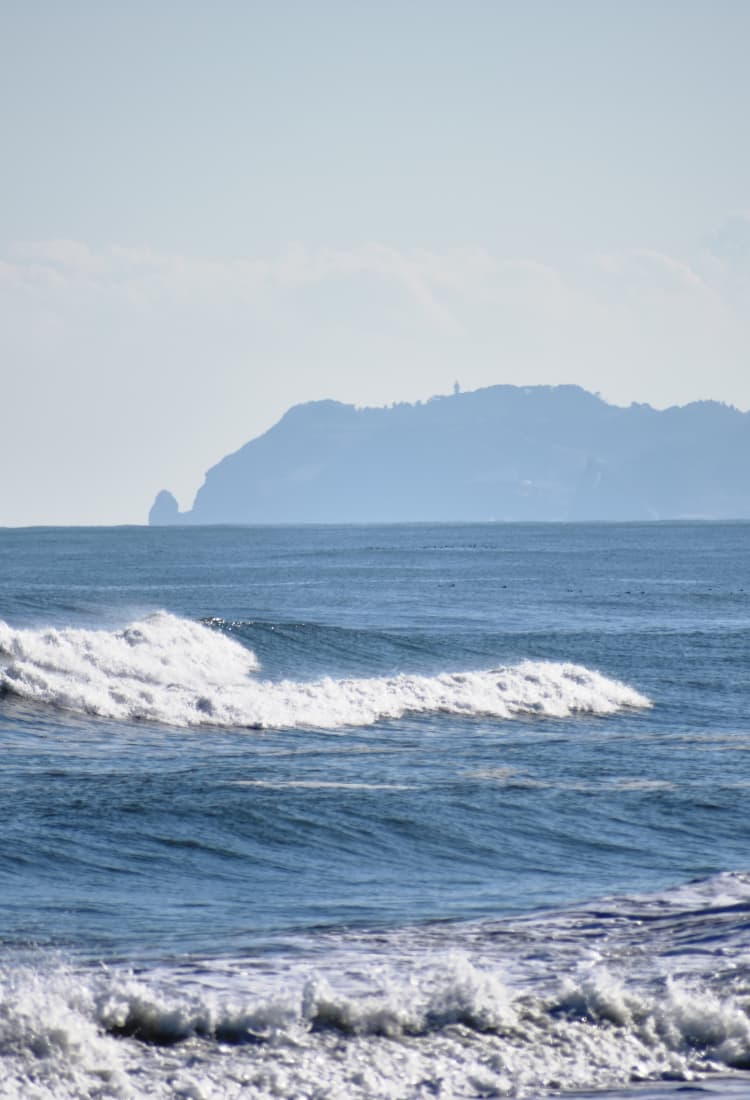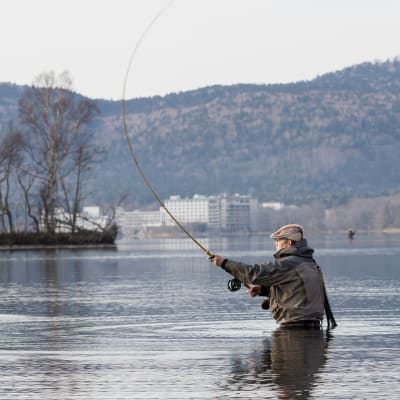

REISEFÜHRER Surfing in Japan Japan's waves make for some spectacular surfing opportunities
As an island nation with great beaches, Japan offers plenty of exciting spots where you can hit the waves
Japan has a thriving surfing scene that grows in popularity every year. With four main islands of immense diversity and countless smaller ones of varying shapes and sizes, there are plenty of opportunities for intrepid overseas surfers. No matter your skill level or board style, Japan has something special for everyone.

Surfing hotspots
The underrated island of Shikoku is a good surfing region and is at its best between June and November. It features some of the best river mouth waves in the world, as well as beautiful landscapes that remain mostly unknown to overseas visitors. On the southern island of Kyushu , you should check out the beaches of Miyazaki Prefecture. The Nichinan Coast , which stretches for some 90 kilometers and offers sea-stacks up to 70 meters in height, is one of the highlights of the region. Uchiumi Point might be the single best place in Japan to surf, thanks to the typhoon swells and rippable walls. In the Kansai region on the main island of Honshu, you will find Wakayama Prefecture's Isonoura Beach. This beach attracts surfers from all over Kansai, especially during the long summer months.

Making Olympian waves
Surfing made its Olympic debut at Tokyo 2020, and efforts are being made to enhance the facilities for competitors. Shidashita Beach in Chiba Prefecture was chosen as a contest site due to its renowned waves and easy accessibility from Tokyo, with a clubhouse and changing rooms open to the public. The local community is actively involved in the surfing scene, and now it's getting ready to accommodate travelers from afar.
Other acclaimed beaches in Chiba include Ichinomiya, which is known for its strong currents, and Onjuku, which has some of the warmest water in the prefecture thanks to currents from the south. Near the southern tip of Chiba, you'll find Wadaura Beach, which has gained a reputation as a place for experienced surfers to test their mettle.
It's possible to reach Chiba by train from Tokyo, but it's more convenient to rent a car in the city and make the pleasant drive down to Chiba's peninsula. Do your best to avoid rush hour, though.


Seasonal shifts
Japanese weather changes dramatically based on the seasons, which affects surfing conditions. A popular time of year for surfers to assemble is during typhoon season, from August to October, though in many areas, it's possible to surf at any time of the year. The subtropical climate of Okinawa ensures you'll be able to take your board out any time, even in December. Windsurfing has also proved to be enduringly popular with Japanese thrillseekers, and the Shonan area is a popular location for it. But for something special, try Lake Motosu in Yamanashi. It's one of the famous Fuji Five Lakes , where you'll be able to windsurf while enjoying a spectacular view of the iconic Mt. Fuji.


Preparing yourself and your gear
If you feel you need to brush up on your skills, there are quite a few surfing schools across the country. Many will offer lessons in board usage, wetsuit usage, and lectures on how to improve your mastery of the waves. Some will even provide live demonstrations so you can see how experienced professionals handle themselves. There are a few schools that provide instructions in English, so make sure to do some research in advance to select the best for your circumstances. There are dedicated surfing shops close to popular beach destinations all over Japan where you'll be able to buy or rent any essential equipment. There's even a street in the Ochanomizu / Kanda area of Tokyo with a large number of dedicated surf retailers. Those in need of boards, bags, footwear, sunglasses, sunscreen, wetsuits or wax are sure to find them all here. Some stores even double up as schools.


Surfing safely
In Japan, it's important to be aware of your environment and keep yourself informed about some potential dangers. Earthquakes are reasonably frequent throughout the country, and with them comes the threat of tsunamis. Stay alert and heed any warnings issued by the authorities to ensure your safety. Beaches tend to be patrolled by lifeguards only during the summer months, so take extra care the rest of the year. Try to surf with at least one other person if you are inexperienced, so there's always someone on hand to help you out if you get into trouble.
Exercise extra caution if you plan on surfing in Okinawa, as the unpredictable tropical storms and jagged coral reefs can pose a hazard to the uninitiated. While there are plenty of sharks swimming about the Japanese coastline, the chances of you being attacked by one are low. But keep your eyes open, just in case.



















































![Kengo Kuma and Japan's New Architecture [PR]](https://res-1.cloudinary.com/jnto/image/upload/w_400,h_400,c_fill,f_auto,fl_lossy,q_auto/v1584347275/story_guide/Sg109_02)








